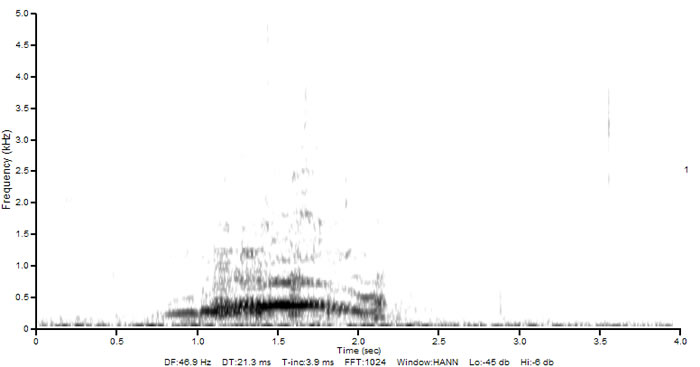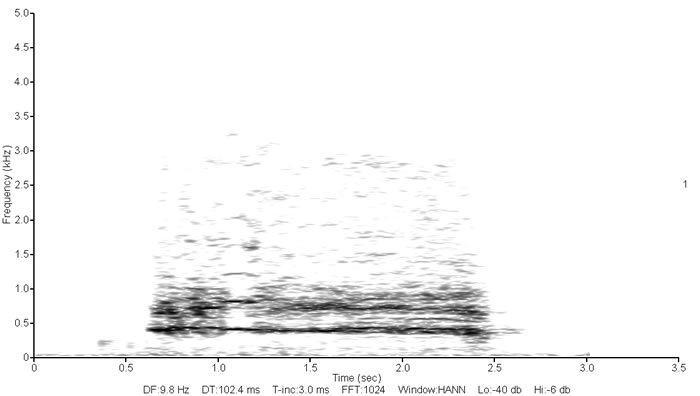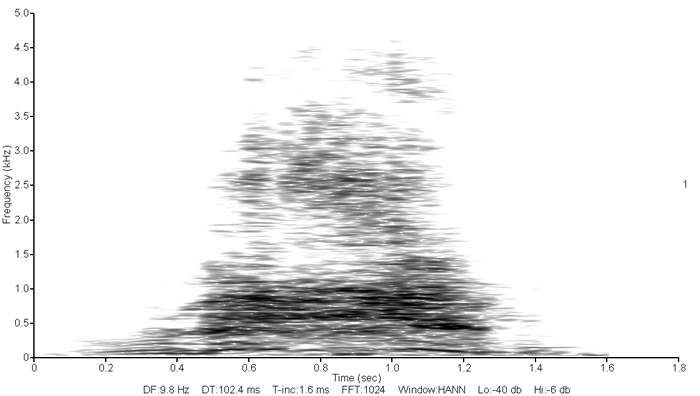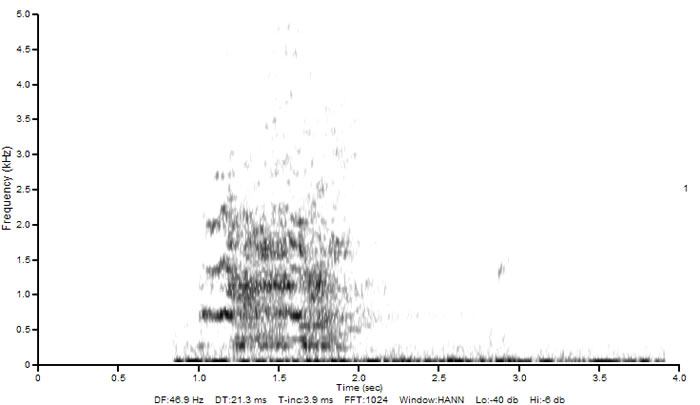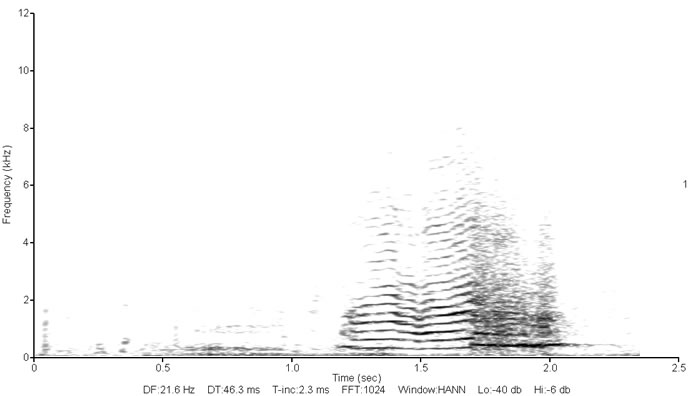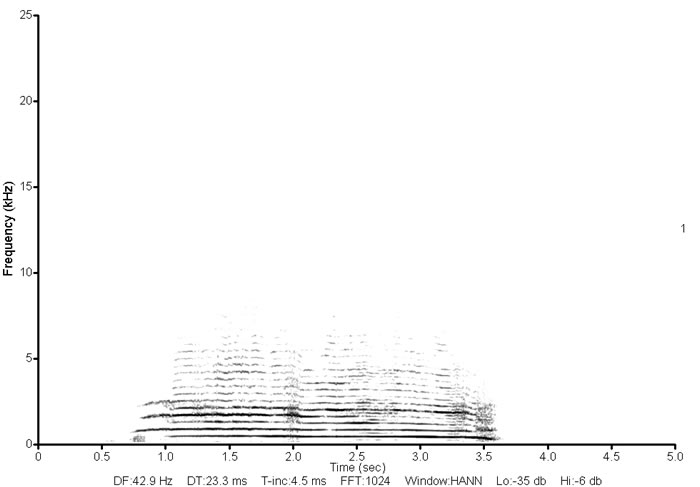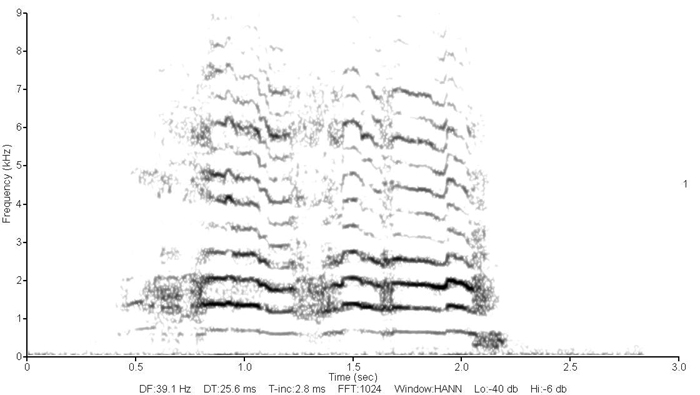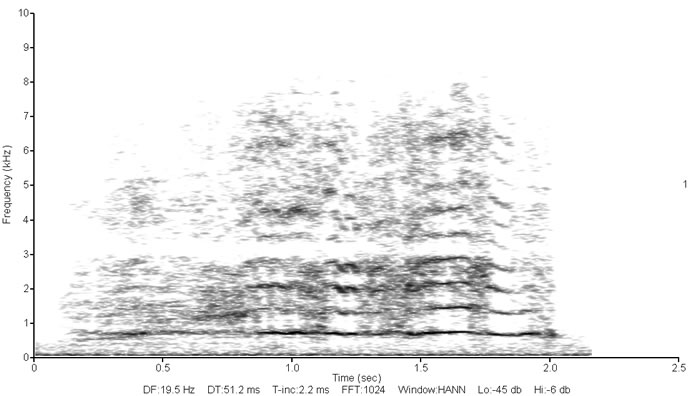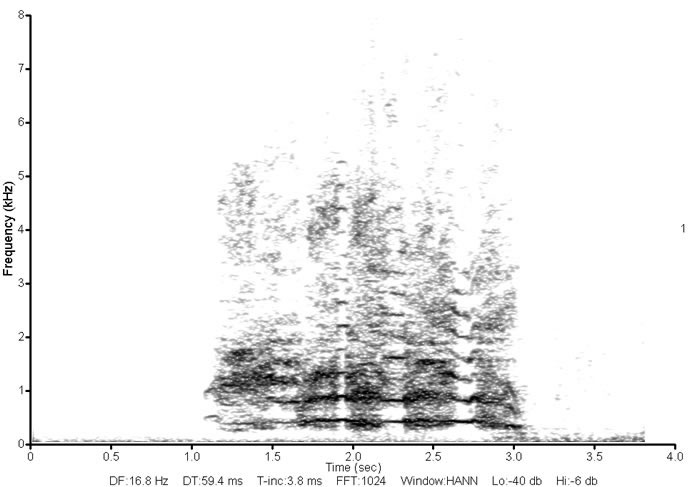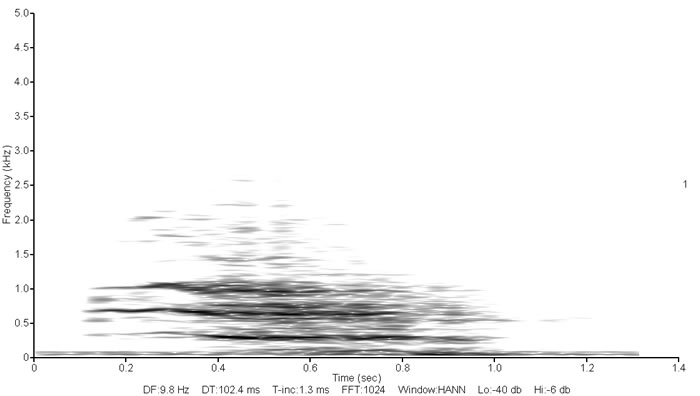Roar
A highly variable roaring, bellowing, screaming, shrieking, or squealing call typically lasting 1-2 seconds in duration. The quality of the Roar depends upon the age of the individual and the behavioral context.
Roars come in three main types: noisy roars, tonal roars, and mixed roars. Noisy roars contain no harmonic elements. Tonal roars are those in which greater than 50 percent of the call is tonal (that is, containing clear harmonics). Noisy elements, if there are any, occur only at the end of the call. Mixed roars alternate between noisy and tonal or contain noisy components, making up more than 50 percent of the call. Noisy roars tend to be unmodulated, while tonal roars may be highly modulated, some reaching a clear crescendo before falling.
All Roar sub-types may start, end, or start and end, with a Rumble; these combination calls are termed Roar-Rumbles, Rumble-Roar-Rumbles, or rarely, Rumble-Roars.
Roars produced by infants are generally higher pitched than Roars produced by adults and the terms ‘screaming,’ ‘shrieking,’ ‘squealing,' or ‘crowing’ better describe the quality of the calls by younger individuals. As elephants become larger Roars take on a more resonant ‘bellowing’ or ‘roaring’ quality.
Most Roars are emitted by protesting individuals or those in some form of distress, with the vast majority being produced by infants, calves, and juveniles. For examples, calves Roar when Begging for, or being denied access to the breast or a food item; when protesting unwanted or rough contact by another elephant; when separated from their mothers; when they are recipients of agonistic behavior (generally pushed, tusked, poked, or kicked); and when attacked by predators. Adults of both sexes may Roar when chased or tusked. Additionally, adult and juvenile female adults may Roar when attacking predators, when chased by males during estrus, and when highly aroused during intense social events.
Roars may be longer in duration and more pulsated if the calling elephant is running, such as when an estrous female is chased. Roaring elicits the support or attention of others. For instance, Roars by calves draw the attention of caretakers, those by a family member draw the immediate response and support of close associates, either individually or as a coalition, and those by an estrous female attract males.
References: Douglas-Hamilton 1972: ch 6; Berg 1983; Stoeger-Horwath et al 2007; Poole 2011. (Full reference list)
This behavior occurs in the following context(s): Birth, Calf Nourishment & Weaning, Calf Reassurance & Protection, Submissive, Protest & Distress



